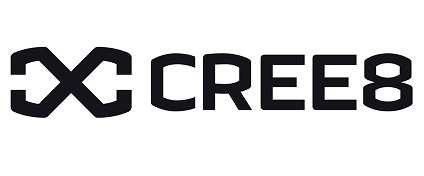South Korea’s Top VFX Companies [2025 Guide for Executive Partner Sourcing]
![South Korea's Top VFX Companies [2025 Guide for Executive Partner Sourcing] 1 South Korea's Top VFX Companies](https://vitrina.ai/wp-content/uploads/2025/10/South-Koreas-Top-VFX-Companies-e1760432056369.webp)
Introduction
The global content ecosystem has been fundamentally reshaped by the Korean Wave, known as Hallyu. This cultural phenomenon has transformed South Korea into a primary global exporter of film, television, and streaming content, driving an unprecedented demand for high-fidelity visual effects (VFX) and cutting-edge post-production services.
For senior executives in film financing, co-production, and content acquisition, the strategic sourcing of South Korea’s Top VFX Companies is no longer optional—it is a competitive necessity.
The South Korean cultural content market is projected to reach $86.4 billion by 2026, according to InvestKOREA, driven largely by global Over-The-Top (OTT) platforms investing billions into original K-Dramas and K-Films. This investment mandates partners who can deliver Hollywood-level complexity on aggressive, series-production schedules.
The challenge, however, is that the fragmentation of the global media supply chain makes it difficult to conduct rapid, data-backed due diligence on specialized Korean vendors.
This guide provides an executive-focused framework for evaluating partners based on technical specialization, virtual production fluency, and project track record, anchored by a curated list of leading Korean content and service providers.
Table of content
- Setting the Stage: The K-Content Boom and the Demand for Korean VFX Companies
- Our Executive Evaluation Framework for Korean VFX Partners
- The Top VFX Studios and Content Companies in South Korea
- How to Integrate Korean VFX Studios into Your Global Pipeline
- How Vitrina Helps Streamline Partner Discovery
- Conclusion
- Frequently Asked Questions
Key Takeaways
| Core Challenge | The rapid growth of K-Content mandates finding technically proficient South Korea’s Top VFX Companies, but fragmented data prevents objective, executive-level due diligence. |
| Strategic Solution | Employ a strategic framework to vet partners based on proven virtual production (VP) investment, specialization in cinematic VFX, and verified executive contacts. |
| Vitrina’s Role | Vitrina tracks the global content supply chain, offering verified project, collaboration, and executive data to streamline the vetting process for specialized Korean vendors. |
Setting the Stage: The K-Content Boom and the Demand for Korean VFX Companies
The South Korean digital content and OTT platforms market, valued at approximately $1.1 billion, is experiencing robust growth driven by high internet penetration (around 98%) and the cultural export of K-Dramas and K-Pop, according to Ken Research.
This expansion has created a high-stakes environment for content production, with global giants like Netflix and Disney+ investing heavily in Korean original programming. This sustained, high-volume production requires a stable, sophisticated supply chain, placing immense pressure and opportunity on South Korea’s Top VFX Companies.
The industry’s technical specialization has become a key differentiator. Korean studios have rapidly adopted virtual production (VP) technologies, notably LED volumes, to manage complex visual effects and environments efficiently.
The use of VP allows for real-time post-production collaboration, reducing the financial and logistical risk associated with traditional green-screen workflows. For instance, the Korean government has pledged ₩1 trillion ($720 million) under its K-OTT Industry Global Competitiveness Strengthening Strategy to support domestic content services, including funding for production that utilizes these advanced technologies, as reported by Omdia.
When selecting a Korean partner, executives must now confirm their VP fluency, not just their compositing skills. The transition to ad-supported streaming (FAST) and the rise of original content have further intensified competition, making South Korea’s Top VFX Companies crucial competitive assets in the global streaming wars.
Our Executive Evaluation Framework for Korean VFX Partners
To de-risk a major co-production or service agreement in South Korea, the decision-making process must be objective and rooted in verifiable technical and financial data. We recommend evaluating potential Korean VFX companies across the following three dimensions:
- Virtual Production (VP) Readiness & Infrastructure: The most strategic Korean partners have invested in large-scale LED volumes and the necessary real-time pipeline integration (e.g., Unreal Engine). Executives must verify the studio’s VP track record, understanding that this infrastructure minimizes costly location shooting, ensures predictable lighting, and significantly accelerates the post-production timeline, providing a high return on investment (ROI).
- Specialization and Genre Fit: South Korean content often features distinctive high-concept genres, from historical epics to hard sci-fi and creature features. It is insufficient to hire a generalist studio. Due diligence requires matching the studio’s demonstrated specialization—be it water simulation, high-resolution digital human creation, or large-scale destruction effects—to the specific needs of the project. A studio’s showreel must validate its competence in the required niche.
- Financial Viability and Executive Accountability: As the entertainment supply chain accelerates, the risk of vendor insolvency mid-project is a significant executive concern. Beyond the creative portfolio, procurement must verify the studio’s organizational stability, employee size, and most importantly, the clear executive reporting structure. The partner must assign a senior, accountable VFX Producer who can navigate cross-border regulatory, tax, and intellectual property (IP) protection requirements.
The Top VFX Studios and Content Companies in South Korea
The following list comprises entities that form the backbone of the Korean content supply chain, ranging from dedicated visual effects houses to major media and content entities that drive the demand for sophisticated VFX services. They are presented here in the user-provided order, underscoring their relevance in the current market.
- Korea Screen
Korea Screen operates as a content-focused entity deeply involved in the cinematic and television production landscape within South Korea. Its primary activities revolve around facilitating film projects, which generates consistent demand for high-quality, specialized post-production services, including digital intermediate and visual effects work for domestic and international releases. - Welike
Welike is an active visual effects and post-production studio based in South Korea, specializing in generating high-end CGI and digital composition for feature films and television series. The studio maintains a portfolio that demonstrates proficiency across various effects disciplines, supporting both local K-Dramas and globally distributed content. - Miracin Korea Film Company
The Miracin Korea Film Company serves as an established production firm involved in the development and execution of Korean film projects. Its content output drives significant post-production demand, including the need for outsourced VFX and animation services to meet the increasingly high visual standards of both domestic cinemas and global streaming partners. - Lifetime Korea
Lifetime Korea, a joint venture channel between A+E Networks and Korea’s top cable television operator, is a major commissioner of lifestyle, documentary, and reality content. While not a primary VFX vendor, its continuous need for broadcast graphics, finishing, and occasional dramatic VFX for original series positions it as a key content buyer in the supply chain. - Korea Telecom
Korea Telecom (KT) is one of South Korea’s largest telecommunications companies and a major content investor and distributor, operating its own media platforms. KT’s strategic investment in content production and its position as a major network operator make it a central nexus for content creation, delivery, and a source of high-budget projects requiring extensive VFX and network infrastructure. - Solid VFX
Solid VFX is a dedicated visual effects company specializing in the creation of sophisticated digital environments and character animation for film and television. The studio maintains a focused approach on complex effects sequences, working to meet the technical demands of high-budget cinematic releases and premium streaming content. - Spectrum Film Korea
Spectrum Film Korea is positioned within the country’s production services sector, providing a comprehensive range of support functions for film and TV projects, from pre-production to physical production. Its role requires deep collaboration with post-production and VFX houses to ensure a seamless workflow from set to final delivery. - Korea National University of Arts
While not a commercial VFX studio, the Korea National University of Arts (K-Arts) is a critical institutional component of the Korean content supply chain. It acts as a primary talent pipeline for the film, media, and VFX industries, shaping the next generation of creative and technical artists essential for sustaining the K-Content boom. - Motion Picture Korea
Motion Picture Korea is a company involved in the broader film and television production market, focusing on developing and producing content for various platforms. As a content originator, it directly drives the project volume and the subsequent need for specialized visual effects and post-production partners in the region. - New Line Korea
New Line Korea is a distribution and marketing company focused on bringing international and domestic films to the Korean market. Its role in the supply chain centers on ensuring high-quality cinematic presentation and localizing content, requiring coordination with post-production and mastering houses that handle final VFX, color grading, and release deliverables.
How to Integrate Korean VFX Studios into Your Global Pipeline
For non-Korean production companies, effectively integrating South Korea’s Top VFX Companies requires a methodical approach that addresses geographical, regulatory, and technological differences.
- Establish a Single Data Governance Protocol: Given the cross-border nature of co-productions, IP security and data transfer protocols are paramount. Implement a single, mandatory cloud-based data platform that adheres to the strictest IP security standards. This centralized system must track every shot version, asset delivery, and feedback note in real-time. This eliminates the operational friction caused by managing disparate file transfer protocols and ensures legal compliance regarding content ownership and usage rights across jurisdictions.
- Mandate Real-Time Production Alignment: Use the time zone difference to your advantage by establishing an asynchronous workflow built on daily deliverables. Require the Korean VFX Company to provide a daily end-of-day update, including a high-priority “issues to address” list for your production team to review during their own work hours. This 24-hour cycle accelerates production. For complex sequences, mandate an executive-level VFX supervisor to participate in weekly virtual production (VP) sessions, ensuring creative feedback is immediate and technical execution remains aligned with the director’s vision.
- Vet for Co-Production Experience: When sourcing from South Korea, inquire specifically about the studio’s experience with foreign co-production and international tax incentive schemes. A partner with a proven history of navigating complex international financing structures—which often rely on local spend mandates and subsidy compliance—is a strategic asset that extends beyond mere technical ability. This experience de-risks the financial structure of the entire project. This strategic approach to partnership is key to capitalizing on the Korean Wave’s momentum.
How Vitrina Helps Streamline Partner Discovery
In the search for South Korea’s Top VFX Companies and other specialized partners, time-poor executives face the persistent problem of fragmented market intelligence. Vitrina provides a strategic solution by mapping the global entertainment supply chain.
Unlike traditional scouting methods, Vitrina allows you to filter and vet vendors based on objective data points: verified collaboration history, specific project track records in high-demand genres (like sci-fi or creature work), and financial stability indicators.
By providing immediate access to over 3 million decision-maker profiles, including verified contact information for executives and VFX supervisors at these Korean firms, Vitrina cuts the average procurement cycle time from months to weeks.
The platform’s ability to track real-time project movement means you can identify production leads in the development stage, allowing you to proactively approach the right Korean partners at the optimal time for a service contract or co-production deal. For executives, this means shifting from reactive searching to proactive, data-informed partnership sourcing.
Conclusion
The strategic sourcing of South Korea’s Top VFX Companies is paramount to capitalizing on the K-Content boom. As production complexity increases and the industry pivots toward virtual production and real-time workflows, an executive’s ability to objectively vet partners on criteria beyond the showreel—namely, VP readiness, genre specialization, and financial resilience—will dictate project success.
By adopting a data-driven sourcing methodology, M&E executives can confidently secure partners in this vital global market, ensuring their content maintains the high visual standard audiences now expect.
Frequently Asked Questions
The growth is primarily driven by the massive global popularity of K-Content (Hallyu), leading to substantial investment in original, high-quality programming by international and domestic OTT platforms.
Many leading Korean VFX companies have invested in Virtual Production (VP) using LED volumes. VP is important because it allows for real-time visual effects and environment creation, significantly reducing the cost and time required for complex post-production.
The South Korean cultural content market is projected to reach approximately $86.4 billion by 2026, showcasing significant expansion driven by exports and the high demand for digital content globally.
The South Korean government supports the content industry through initiatives like the K-OTT Industry Global Competitiveness Strengthening Strategy, which provides funding and strategic support for domestic platforms and content creation.















































